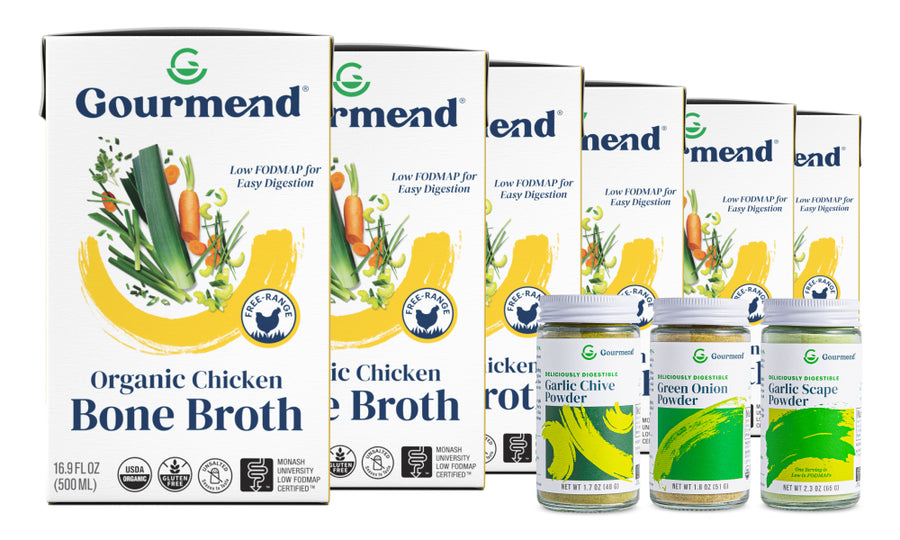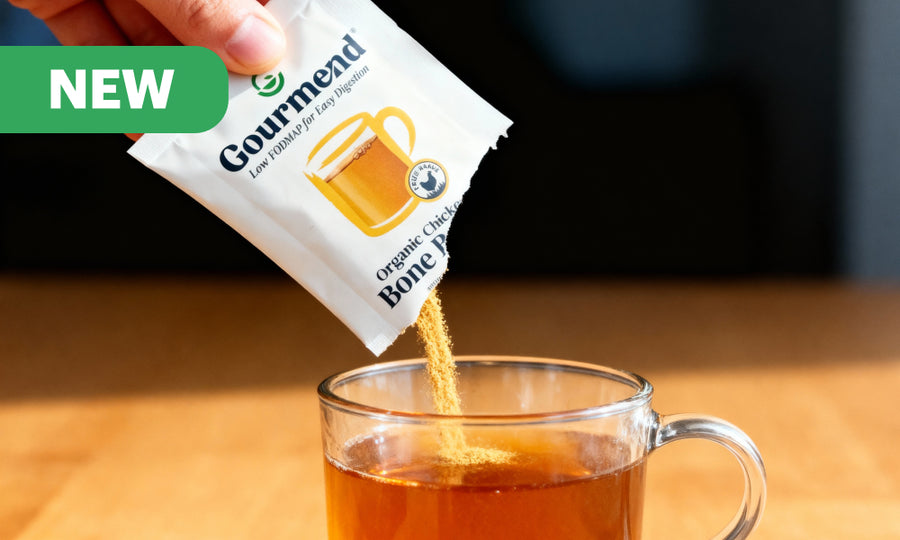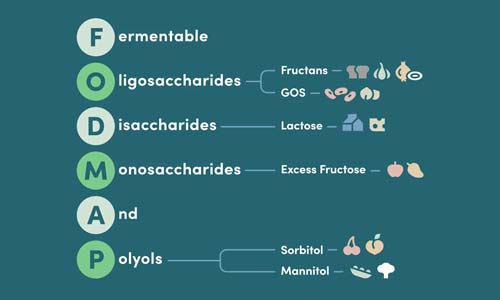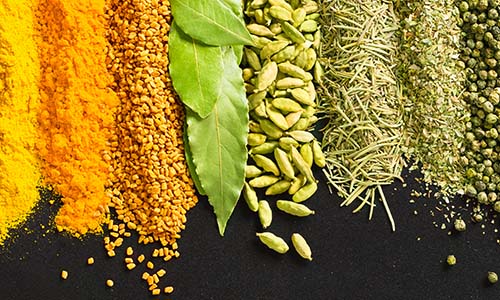Are Cherries Low FODMAP? Your Complete Guide

The Science Behind FODMAPs and Cherries
Cherries pack a double FODMAP punch. Their sorbitol content (1.2g per 100g) exceeds safe thresholds by 600%, while excess fructose compounds the problem. When these sugars reach your large intestine undigested, gut bacteria ferment them rapidly, producing hydrogen and methane gases.
This fermentation process explains why someone with IBS might feel perfectly fine after eating cherries, only to experience significant bloating and cramping 2-4 hours later. The delayed onset often makes it challenging to identify cherries as the culprit without systematic elimination testing. For more information on how FODMAPs impact digestion, see this scientific overview of FODMAPs and IBS.
For context, even a small handful of 5-6 cherries (approximately 50g) delivers enough sorbitol to trigger symptoms in most FODMAP-sensitive individuals.
Cherry Varieties & FODMAP Content: What's the Difference?

| Cherry Type | Primary FODMAPs | FODMAP Level | Safe for Elimination Phase? |
|---|---|---|---|
| Sweet (fresh) | Sorbitol, excess fructose | High | No |
| Sour/Tart | Sorbitol, excess fructose | High | No |
| Dried | Concentrated sorbitol/fructose | Very High | No |
| Cherry Juice | Concentrated fructose | High | No |
Unfortunately, processing doesn't eliminate FODMAPs from cherries. Dried cherries concentrate the problematic compounds, making them even more likely to trigger symptoms. Frozen cherries retain their original FODMAP content, while cooked cherries may have slightly reduced levels but remain unsafe during elimination phases.
Cherry juice presents particular challenges because it concentrates fructose while removing fiber that might slow absorption, creating a perfect storm for digestive distress. If you're looking for more fruit-specific FODMAP guidance, you may find our article on are grapes low FODMAP helpful.
Safe Fruit Choices When Cherries Are Off the Menu
- Strawberries: Up to 10 medium berries (140g) – rich in vitamin C and anthocyanins
- Blueberries: Up to ¼ cup (40g) – packed with antioxidants and natural sweetness
- Grapes: Up to 1 cup (150g) – satisfying burst of juice and flavor
- Kiwi: 2 medium fruits – vitamin C powerhouse with digestive enzymes
- Orange segments: 1 medium orange – citrus brightness with fiber
These alternatives deliver similar antioxidant benefits and natural sweetness without the sorbitol load. Strawberries particularly shine as cherry substitutes in desserts, offering comparable color and a sweet-tart flavor profile that works beautifully in everything from fruit salads to baked goods. For more on this, see our guide to are strawberries low FODMAP.
For enhanced flavor depth in cooking, consider incorporating Gourmend shelf-stable broth cartons into fruit-based sauces and glazes, the umami from nori seaweed and oyster mushrooms creates surprisingly complex flavor layers.
The Nutritional Value of Cherries: Loss & Gains on a Low FODMAP Plan
Cherries deliver impressive nutrition: 97mg vitamin C per cup, 306mg potassium, and powerful anthocyanin antioxidants linked to reduced inflammation. However, avoiding cherries doesn't mean sacrificing these nutrients.
| Cherry Nutrient | Low FODMAP Alternative | Serving Size |
|---|---|---|
| Vitamin C (97mg) | Strawberries (89mg) | 10 medium berries |
| Potassium (306mg) | Orange (237mg) | 1 medium fruit |
| Anthocyanins | Blueberries | ¾ cup |
| Dietary Fiber (3g) | Kiwi (3g) | 1 medium fruit |
While you'll miss cherry's unique anthocyanin profile, these alternatives deliver comparable nutrition without triggering digestive symptoms. Gourmend's Vegetable Broth contains nori seaweed, which provides additional antioxidants and minerals to help fill nutritional gaps in your low FODMAP meal planning.
How to Enjoy Fruit & Minimize FODMAPs: Practical Tips

Success with low FODMAP fruit consumption hinges on three essential techniques: portion control, strategic timing, and smart pairing. Keep individual fruit servings to Monash University-tested limits and space them at least three hours apart to prevent FODMAP accumulation in your digestive system.
Strategic pairing transforms fruit from potential trigger to digestive ally. Combine low FODMAP fruits with protein-rich foods like lactose-free Greek yogurt or almonds (up to 10 nuts) to slow digestion and reduce symptom risk. For Clean Label Claire preparing school lunches, this means pairing 10 strawberries with string cheese rather than serving fruit alone.
Timing matters as much as quantity. Gut Health Grace discovered that eating fruit mid-morning rather than as dessert prevented evening bloating. Consider incorporating Gourmend's broths into fruit-forward dishes, our Chicken Bone Broth adds protein and depth to fruit-based glazes without competing flavors.
Reintroducing Cherries: Science-Based Strategies for Testing Tolerance
Cherry reintroduction requires systematic patience and careful monitoring. Wait until you've completed the full elimination phase (typically 2-6 weeks) and achieved symptom stability before attempting any high FODMAP foods. Start with exactly two fresh cherries on an empty stomach, then monitor for 72 hours.
Document everything in a detailed symptom diary. Record timing of consumption, symptom onset (typically 1-6 hours), type of discomfort (bloating, cramping, urgency), and severity on a 1-10 scale. If no symptoms occur after three days, increase to three cherries and repeat the monitoring cycle.
For IBS Irene's reintroduction journey, she started with two sweet cherries on Tuesday morning, experienced mild bloating by afternoon, and decided to pause cherry testing for two weeks. This response indicates her sorbitol tolerance remains low, a valuable data point for long-term meal planning.
Expert Insight: Failed reintroduction doesn't mean permanent restriction. Some Gourmend customers successfully reintroduce small amounts of previously problematic foods after 6-12 months of gut healing through consistent low FODMAP eating.
Cherries vs. Low FODMAP Fruits: Comparative Analysis
Direct comparison reveals why certain fruits earn low FODMAP status while cherries remain problematic. The key differentiators lie in specific FODMAP types, concentrations, and individual tolerance thresholds across different fruit categories.
| Fruit | FODMAP Status | Key FODMAPs | Safe Serving | Flavor Profile |
|---|---|---|---|---|
| Cherries | High FODMAP | Sorbitol, excess fructose | None established | Sweet-tart, rich |
| Strawberries | Low FODMAP | Minimal fructose | 10 medium berries | Sweet-tart, bright |
| Blueberries | Low FODMAP | Low fructose | ¾ cup | Sweet, mild |
| Grapes | Low FODMAP | Balanced sugars | 1 cup | Sweet, juicy |
Antioxidant content and versatility favor the low FODMAP alternatives. Blueberries provide comparable anthocyanins to cherries, while strawberries deliver superior vitamin C density. For Amateur Chef Cindy's weekend baking, these fruits perform identically to cherries in cobblers and tarts while supporting digestive comfort. For more on this, check out our article on are blueberries low FODMAP.
Recipe applications showcase practical advantages of FODMAP-friendly choices. Gourmend's Vegetable Broth enhances fruit-forward savory dishes, creating complex flavor layers that rival cherry's natural depth without digestive consequences. For further reading, see the American Gastroenterological Association's overview of the low FODMAP diet.
Problem Solving: Craving Cherries on a Low FODMAP Diet

Cherry cravings often stem from nostalgia, flavor memory, or a desire for that sweet-tart burst in recipes and snacks. While cherries are off-limits during the elimination phase, you can satisfy similar cravings by:
- Swapping in strawberries or blueberries for color and tang in desserts and salads
- Using grapes or kiwi for juicy, refreshing snacks
- Experimenting with low FODMAP fruit compotes or sauces, enhanced with Gourmend shelf-stable broth cartons for extra depth
Remember, the world of low FODMAP fruit is abundant and flavorful, your palate will adapt and thrive with a little creativity.
Gourmet Living: Making Each Bite Count Without Cherries
Low FODMAP living amplifies flavor appreciation rather than restricting it. When you eliminate problematic foods like cherries, you discover the nuanced tastes of strawberries, blueberries, and grapes, each offering distinct flavor profiles that shine in both simple preparations and complex dishes.
Elevate your fruit game with Gourmend's clean-label broths and seasonings. Our chive sprigs, leek greens, and nori seaweed create umami-rich bases for fruit vinaigrettes, glazes, and even dessert reductions. These ingredients transform ordinary low FODMAP fruits into restaurant-quality components.
Build your flavor arsenal systematically. Start with approved fruits, then layer in complementary tastes using our shelf-stable broth cartons. The result? Bold, satisfying meals that support your digestive wellness while delivering the gourmet experience you crave.
Explore our complete collection of low FODMAP recipes for inspiration that proves restriction breeds creativity, not limitation.
The Final Verdict: Navigating Cherries on Your Low FODMAP Journey
Are cherries low FODMAP? The science is clear: fresh cherries contain high levels of sorbitol and excess fructose, making them unsuitable during the elimination phase. No safe serving size currently exists for most people with IBS.
Your path forward depends on your goals. If you're in elimination phase, focus on proven alternatives like strawberries, blueberries, and grapes. These fruits provide similar nutritional benefits without triggering digestive symptoms. For those ready to test tolerance, work with a qualified dietitian to develop a structured reintroduction protocol.
The bigger picture reveals opportunity, not limitation. Removing high FODMAP foods like cherries opens space for discovering new flavors and combinations. Gourmend's clean-label broths and seasonings help you build complex, satisfying dishes that support both your taste preferences and digestive wellness.
Remember: are cherries low FODMAP isn't just a yes-or-no question, it's an invitation to explore a more intentional, flavorful approach to eating that puts your wellbeing first.
Frequently Asked Questions
Why do cherries trigger IBS symptoms and what role do sorbitol and excess fructose play in this?
Cherries trigger IBS symptoms because they contain high levels of sorbitol and excess fructose, both fermentable carbohydrates that draw water into the intestines and ferment rapidly. This fermentation produces gas, leading to bloating, cramping, and other digestive discomforts typically 2-4 hours after eating cherries.
Are there differences in FODMAP content among various cherry types like fresh, dried, and juice?
Yes, all cherry types, fresh, dried, and juice, contain high levels of sorbitol and excess fructose, making them high FODMAP. Dried cherries concentrate these sugars even more, increasing their FODMAP load, while cherry juice concentrates fructose and removes fiber, which can worsen digestive symptoms.
What are some low FODMAP fruit alternatives that provide similar nutritional benefits to cherries?
Low FODMAP fruit alternatives include strawberries, blueberries, grapes, kiwi, and orange segments. These fruits offer antioxidants, vitamin C, and natural sweetness without the high sorbitol content found in cherries, making them gentler on digestion while still delivering great flavor and nutrition.
Does processing cherries, such as freezing or cooking, reduce their FODMAP levels enough to be safe during elimination phases?
Processing cherries by freezing retains their original FODMAP content, so they remain high FODMAP. Cooking may slightly reduce FODMAP levels but not enough to be considered safe during elimination phases of a low FODMAP diet.





